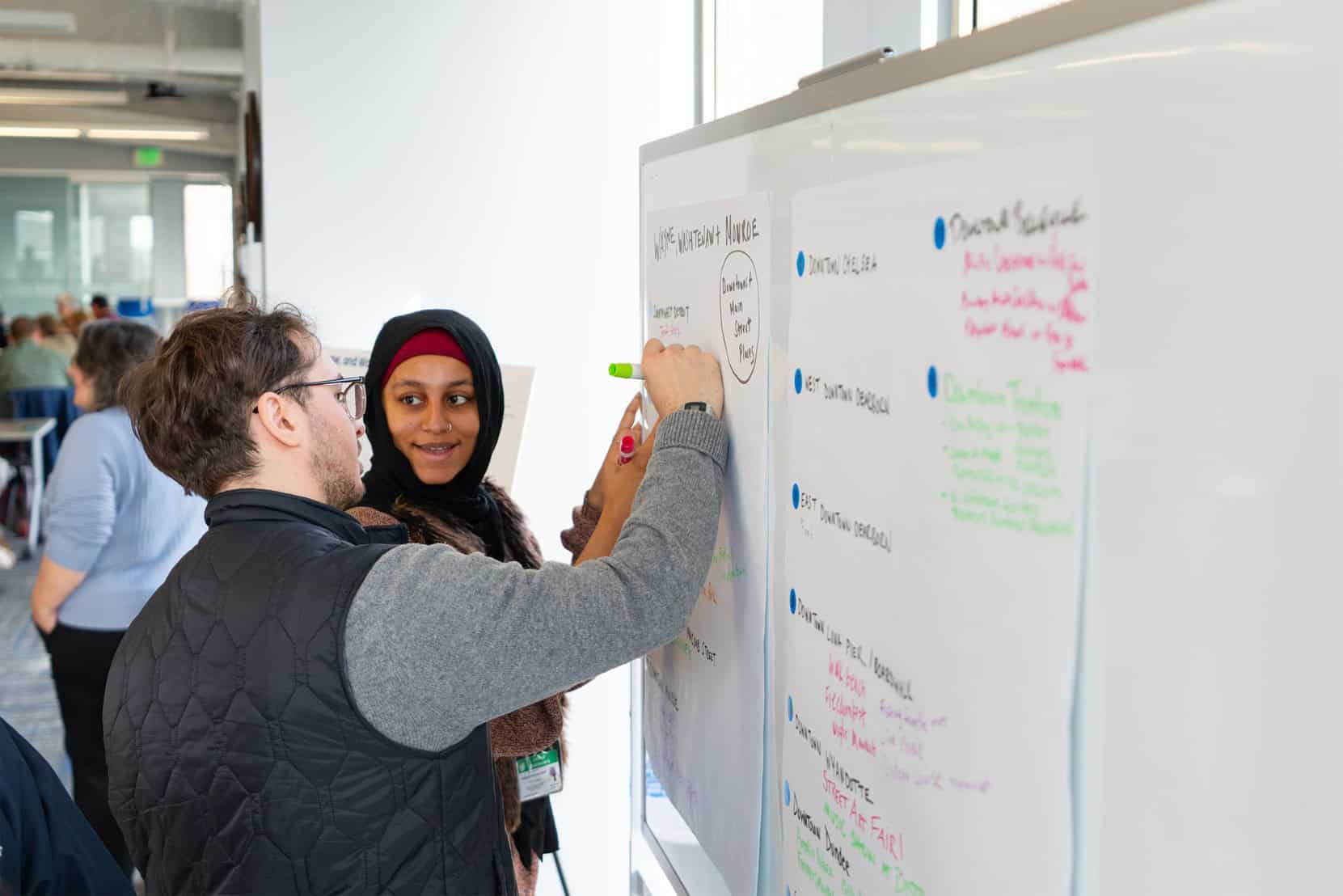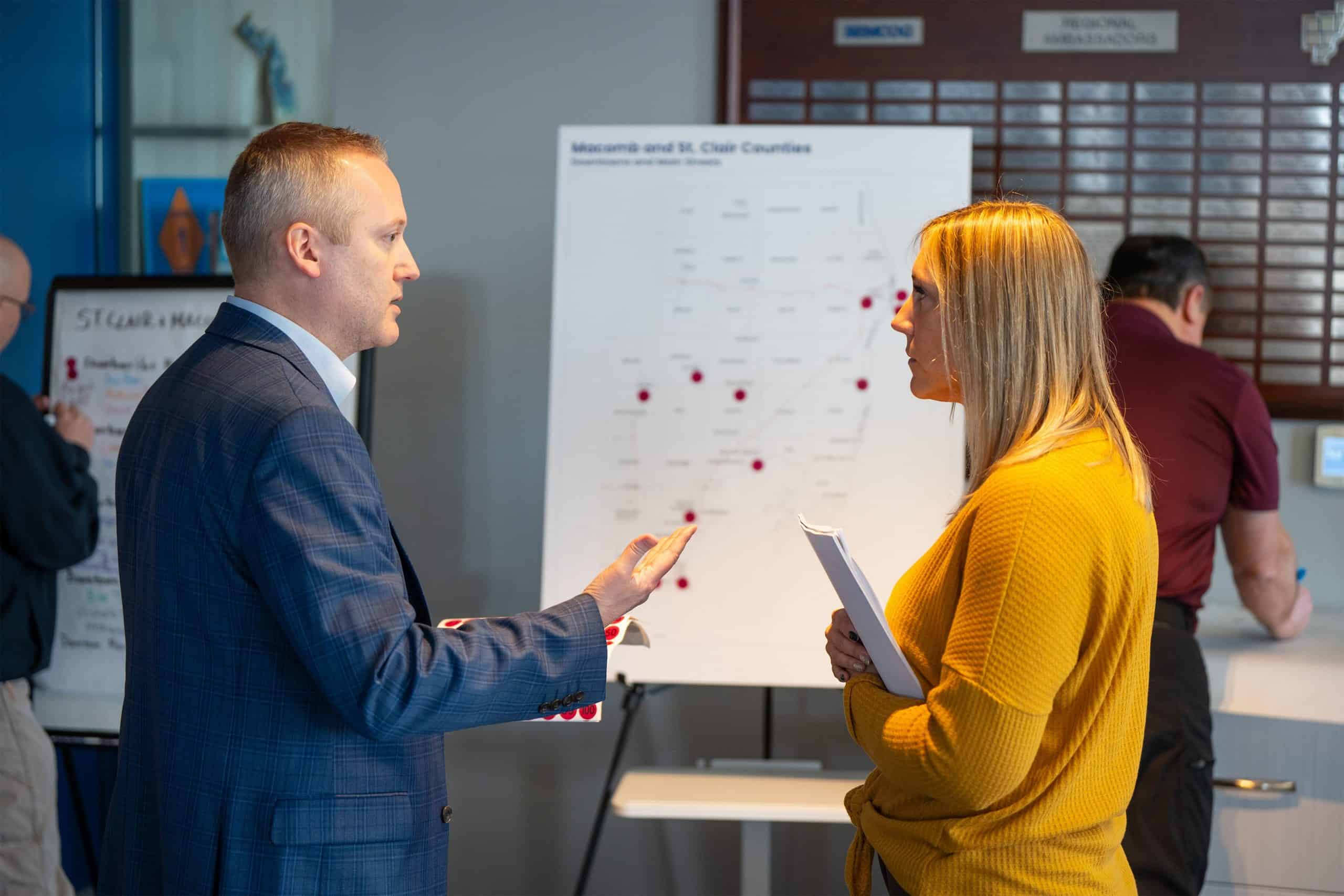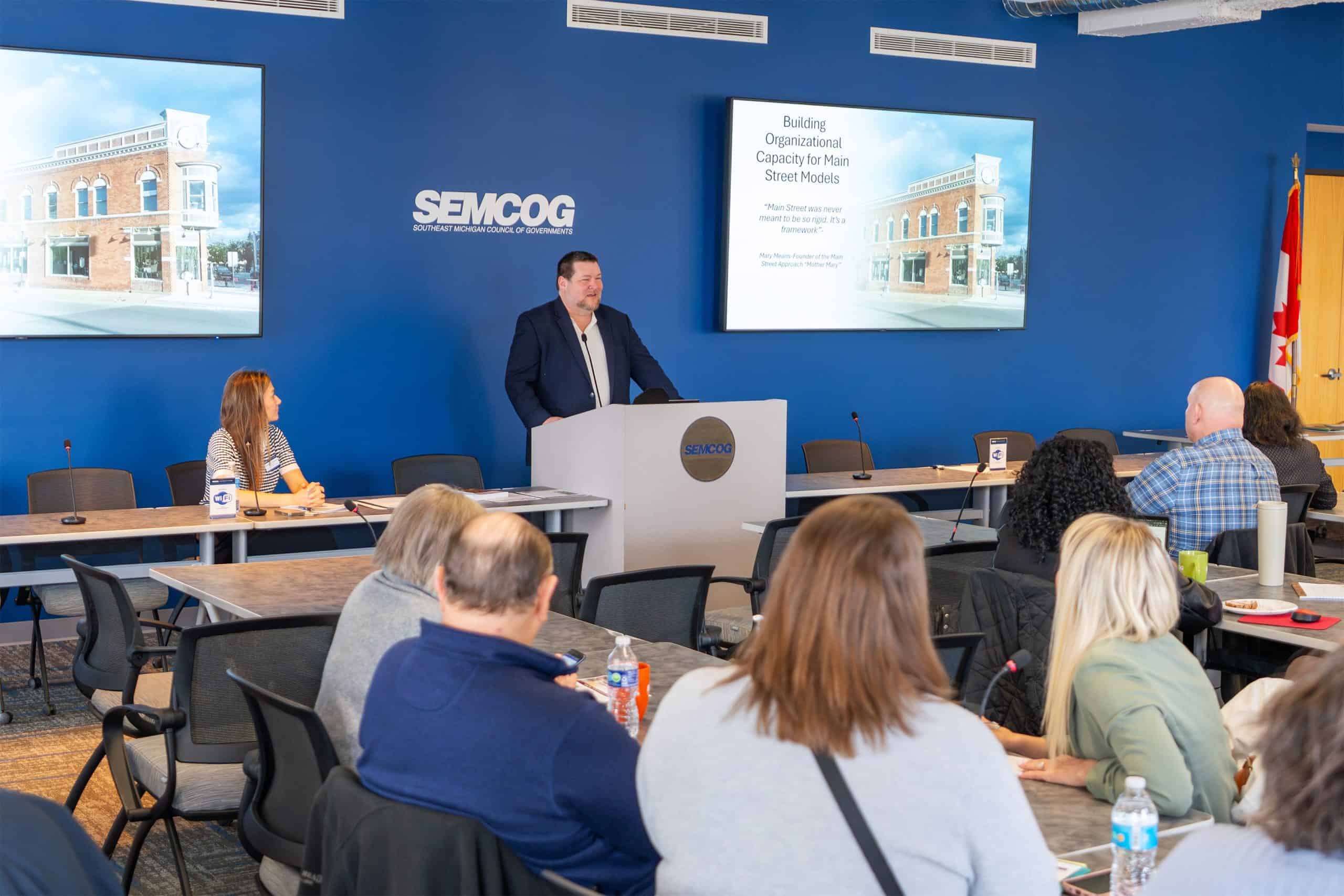One of the elements of SEMCOG’s regional vision for Southeast Michigan is a connected, thriving region of small towns and dynamic urban centers. This happens, in part, through Main Street revitalization and placemaking in our local communities. People know instinctively when they are in a vibrant downtown or Main Street, but what are the elements that create that experience?
To answer this question, SEMCOG has begun a series of SEMCOG University sessions on this topic. The first session, hosted on March 14, 2025, was about setting our communities up for success, first by developing a vision and then through building out the human capacity and funding sources needed to implement the vision.

Farmington Mayor Joe LaRussa opened by urging elected officials, community administrators, and professionals to see themselves as responsible for shepherding a vision to completion. He shared that, in the past, a lack of vision in Farmington resulted in a downtown design that was not conducive to spending time. In particular, the downtown area did not have a place for people to gather but was instead a place where people would come into town, run errands, and leave.
Stemming from a decision to both prioritize pedestrians and accommodate vehicles, the city has shepherded many projects from vision to reality, including updates to Farmington Road, the creation of new parks, and improvements that highlight key buildings and assets. LaRussa shared a series of before-and-after photos, asking those in attendance to evaluate the “before” photos for needed improvements. He also shared about crowdfunded projects which have been successful in terms of raising awareness and getting the community energized.

Michelle Parkkonen, Managing Director for Technical Assistance at the Michigan Economic Development Corporation, spoke about readiness through visioning and capital planning and shared why capital plans are needed to revitalize places. For downtowns, this includes asking the question, “What is the pedestrian experience?” The benefits of planning for capital improvements includes establishing financial stability, coordination of capital improvement projects, and leveraging grant funding. While communities with limited funds may push back on capital improvement planning for visionary downtown projects, it is important to include them in documents and capital improvement plans in order to be positioned and ready to apply for funding if it becomes available in the future (through grant opportunities or other sources). Examples highlighted in the talk include an overhaul of Cherry Street Mall in Mt. Clemens and Dodge Park in Sterling Heights. Parkkonen also shared about the Main Street Solution Center.

To build out human capacity and leadership, John Bry shared about various main street models, which he referred to as Downtown Management Organizations. These DMOs can be structured differently (DDA, PSD, BID, CIA, Non-Profits, City government, Chambers of Commerce, or combination) depending on what works best for the community. The dominant model of a main street organization across the nation is a non-profit, and Bry shared that this is not as common in Michigan as it is in other states. He shared that leadership is everything and that getting the right people involved is key. He shared ten principles that are key for building capacity and getting things done in downtown.

To close out session one, I shared about various funding sources that are often available each year and which can be used for applying for grants that relate to downtown projects, such as streetscape improvements, quick-build placemaking projects, or community art. It is helpful to know what grants usually get announced when so that your community can be prepared with a plan. Having adopted plans for your downtown is key for getting grant funding, and many organizations want you to apply for “shovel-ready” projects that have widespread community and staff buy-in. While these grants generally come out each year at certain times and with a general range of funding, specifics can change year-to-year, so it is important to remain flexible. View the slides from the presentation on grants.
Creating successful Main Streets requires developing a vision, building capacity, and identifying funding. It is important to connect the dots between various types of projects in a downtown – such as placemaking, infrastructure, pocket parks, roads, housing, and economic development. If you are interested in improving your downtown or main street, watch the recording of session two, called Developing Vibrant Year-Round Places, which took place on April 17, 2025, and register today for session three in the Main Street Placemaking and Revitalization Series, a webinar called Creating Save and Livable Main Streets, scheduled for Friday, May 16, at 11 a.m.

Leave a Reply